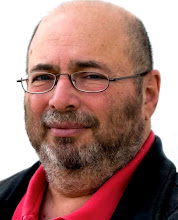Let’s not kid ourselves. Textbooks cost money.
In recent years, rising costs of paper, ink, and delivery have narrowed – if not totally destroyed – the profit margin on books which fail to become bestsellers. The amount of time and energy needed to get a book into the hands of its readers means that many works become obsolete by their date of publication.
That all changes with electronic publishing. Not only can bloggers retain complete artistic control over their intellectual product, bloggers quickly bypass some of the traditional obstacles encountered when publishing a text in hard copy:
Cost considerations:
- Bloggers are not held hostage by variations in the prices of ink, postage, and/or paper.
- Bloggers don’t need to worry about physical restrictions imposed by page size, book size, shipping weight and/or availability of shelf space.
- Bloggers face no extra cost to add color to their presentations.
- Bloggers don’t need to worry about the high price of binding a book – or publishing a book whose binding eventually falls apart.
- Bloggers don’t need to budget for a sales/marketing campaign or particular size of print run.
- Bloggers don’t need to pay the costs of warehousing inventory which might end up being remaindered.
Strategic risks:
- Bloggers don’t need to compete against other titles in a publishing house's line of books.
- Bloggers don’t need to negotiate with publishers through agents.
- Bloggers don’t need to battle ridiculously outdated publishing concepts such as claims that "You can't have a murder mystery that's more than 225 pages....."
On the flip side, however, are the creative advantages:
- Bloggers can update their work at any time.
- By taking advantage of the hypertext links, bloggers can insert value-added reference links to intellectual content which is available to anyone on the Internet without any violation of copyright law.
- Bloggers can get direct feedback from their readers.
One of my favorite quotes comes from the final scene of Hello, Dolly! at the moment when most of the principal characters have gone upstairs to get their money out of Horace’s safe. Left alone in Vandergelder’s Hay & Feed Store, Dolly Levi lovingly wraps her arms around the cash register, turns to the audience, and utters Thornton Wilder’s famous words:
“Money, money, money, money, money -- it’s like the sun we walk under -- it can kill and it can cure. Horace Vandergelder never tires of saying that 99% of the people in this world are fools and, in a way, I suppose he’s right. We’re all fools. Himself, Irene, Cornelius, myself. We’re all fools – and we’re all in grave danger of destroying the world in our folly. Yet the surest way to keep us safe from harm is to give us those few things in life which will make us happy – and that takes a little bit of money!
“Now, the difference between a little bit of money and no money at all is enormous – and it can shatter the world. And the difference between a little bit of money and an enormous amount of money is very slight. But that, too, can shatter the world. It’s all a question of how it’s used. As my late husband, Ephraim Levi, always used to say: Money -- you should pardon the expression -- is a little like manure. It doesn’t do anyone a bit of good unless it’s spread all around, encouraging young things to grow.”
A lot of hard work went into creating Dictation Therapy For Doctors. If this blog has been of value to you and you would like to make a donation to its author, please feel free to use one of the following options (the amount you donate is entirely your choice).
Online: You can make a donation via PayPal, credit card, or e-check, by clicking on the link in the right-hand column of your screen.
584 Castro Street, #275
San Francisco, California 94114
Please make checks payable to "George Heymont."
Thank you for supporting and spreading the word about
[Home] [Exercises] [Worksheets]
